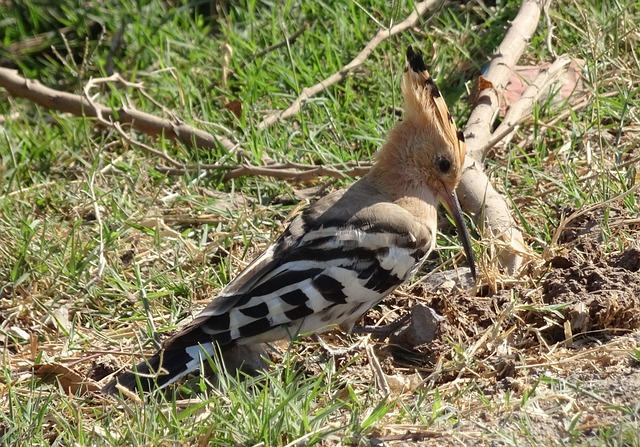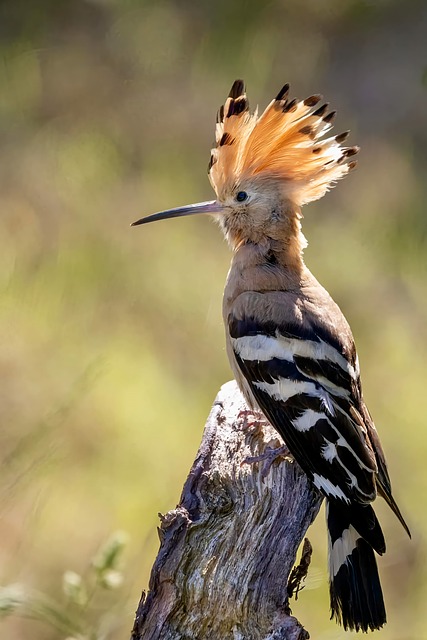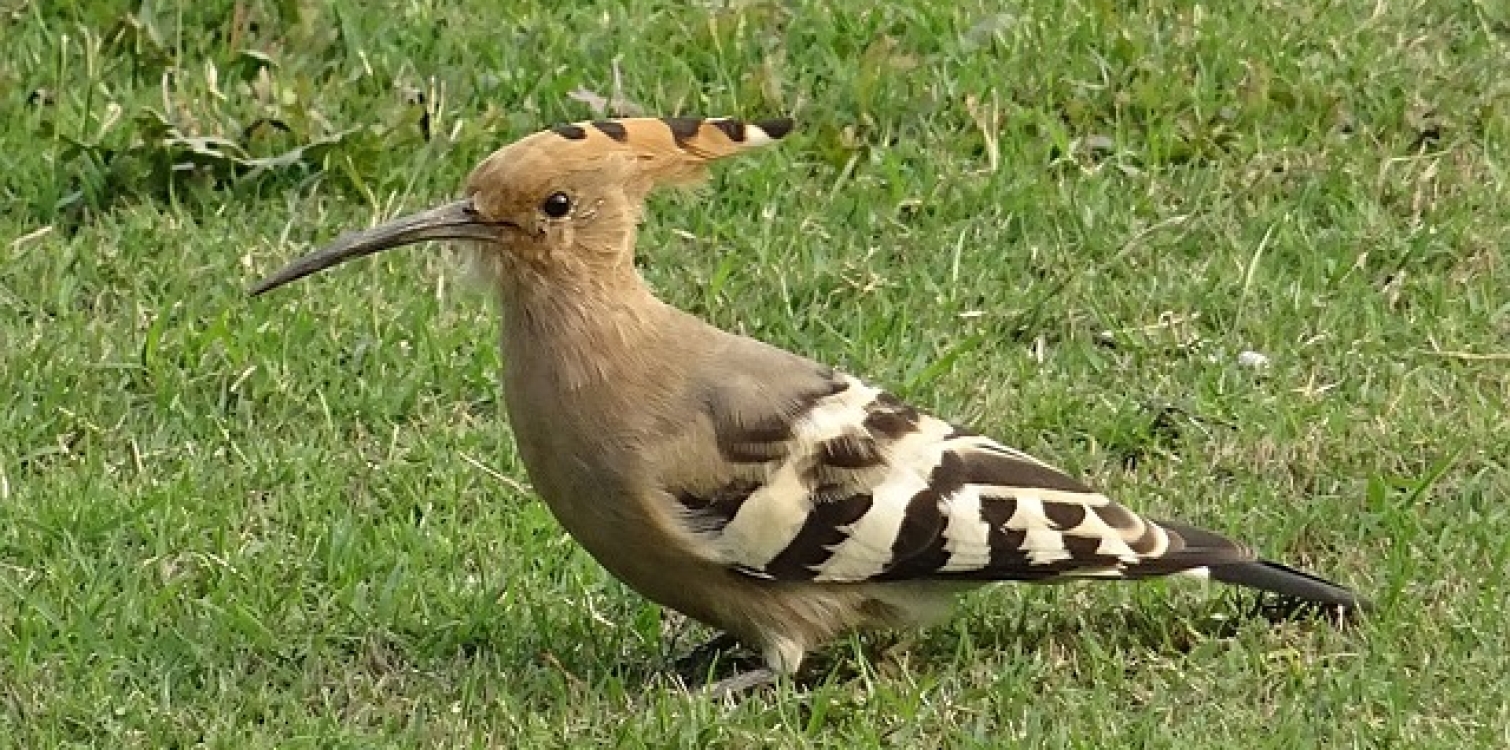
Source: Pixabay
Eurasian hoopoe (Upupa epops)
| Size |
|
| Weight |
|
| Diet |
|
| Habitat |
|
| Kingdom |
|
| Phylum |
|
| Class |
|
| Order |
|
| Family |
|
| Genus |
|
| Species |
|
Eurasian hoopoe has a small head, short legs, and a thin, long beak that curves downwards.
The head and chest are brownish orange, the wings striped in black and white. The tail is black with a white transverse stripe. It is difficult to distinguish the female from the male.
It lives in an agricultural landscape interrupted by shrubs or sparse trees. You will often see it in old meadow orchards, where it nests in a tall tree and gathers food with its long beak. It sticks its beak into the soil or into crevices in the bark of the tree, looking for insects and larvae.
The female lays between five and eight eggs, which take two to three weeks to hatch. The young are fed by both parents. Interestingly, the young can spray faeces, hiss, beat with one wing and peck when threatened.
The Eurasian hoopoe is a summer visitor as it is a migratory bird. It arrives in April or May and stays until September. It nests in north-eastern Slovenia, in Goričko, Vipava Valley, Primorje, Kočevsko and scattered elsewhere in Slovenia.
In the north-western part of Slovenia, you will also hear it called the "hupkač" or "upkač" due to its characteristic call: “(H)up – (h)up – (h)up”.

Source: Pixabay
DID YOU KNOW?
- The name "smrdokavra" comes from the unpleasant smell that the chicks emit. This odor serves as a defense mechanism to deter predators.
- The Eurasian hoopoe is also known for its sunbathing behavior. It often crouches, spreads its legs and wings, and lifts its head and beak towards the sun. What an "enjoyer"!
Thank you.

